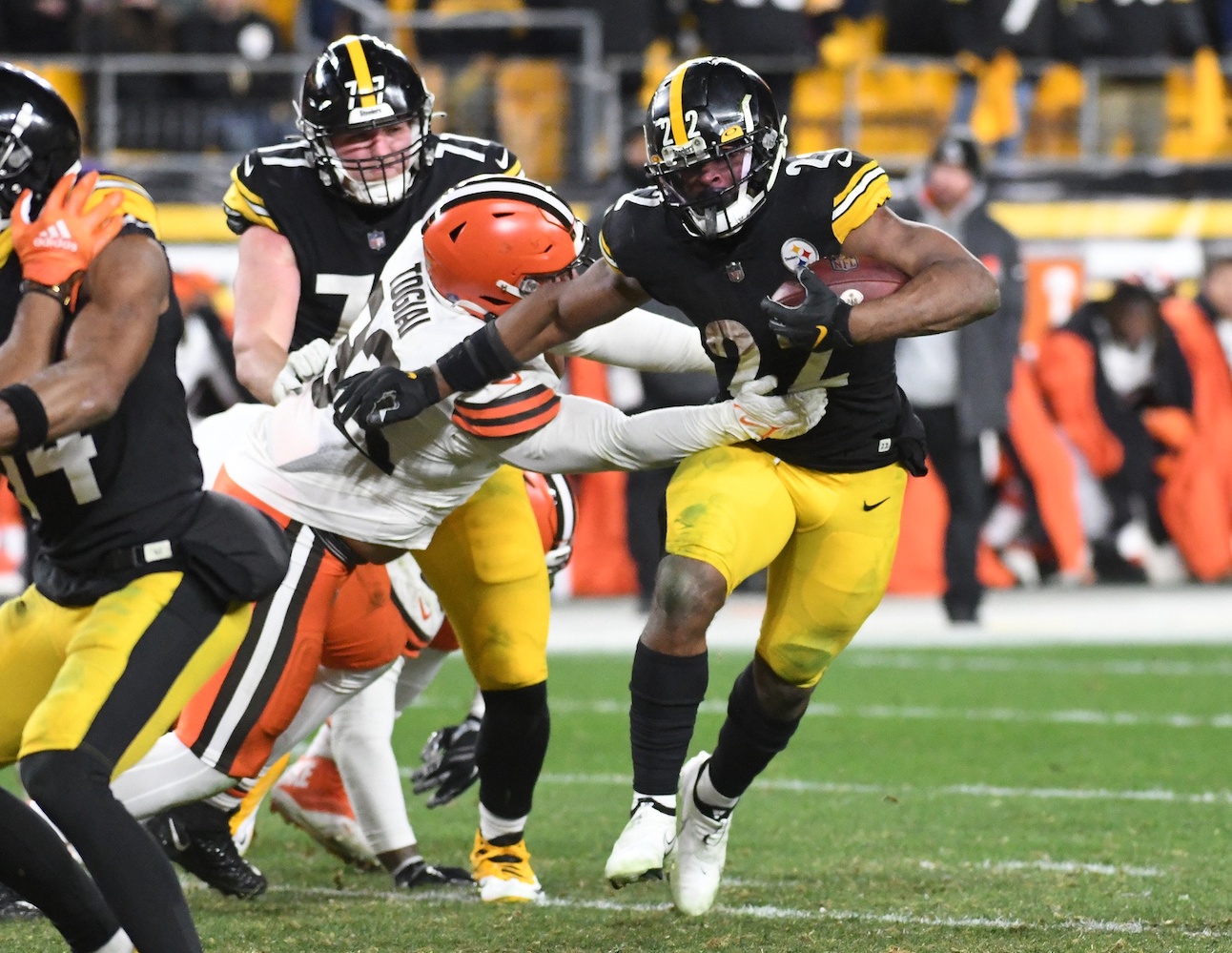From Cordarrelle Patterson, Alvin Kamara, and Deebo Samuel on the offensive side of the ball, to the Micah Parsons and Derwin James’ of the world aligning opposite, versatility has remained king in the NFL. While prior days of NFL football saw players work at one spot, and one spot only at times, for an entire career, the onus on players to wear multiple hats while maintaining a high level of production has continued to diversify the game as we know it today.
Offensively, a quick glance around football tells you all you need to know about where the game is heading. It’s pass-happy and become overwhelmingly so. As coordinators scour the collegiate ranks in search of their next Patrick Mahomes or Justin Herbert—talents that can sling it 70 yards through the air into a bucket—it’s become ever important to find talent to catch said throws, no matter what the player’s fundamental background on offense is. Just 20 years ago, as LaDainian Tomlinson and Priest Holmes ran roughshod around opposing defenses, comparing the skill sets of the Kamaras and Christian McCaffreys of today’s game has produced a complete flip of the script from the larger, downhill backs whose role in the passing game was nothing more than an extra body to protect. Outside of Derrick Henry, whose game is taken right out of a 1950s NFL Films documentary, being one-dimensional simply doesn’t work anymore. Coordinators are asking more of their backs, wideouts, and tight ends to diversify their game, which, in turn, has introduced some of the most unique talents the game has seen in its 101-year history.
That versatility makes the game uniquely intriguing from a schematic standpoint, but nightmarish for defenses, as guys like Samuel and Patterson have become the poster child for future Weapon Xs set to shoulder an offensive workload.
Both wideouts out of college, their individual, seemingly endless skill sets have become paramount for the San Francisco 49ers’ (Samuel) and Atlanta Falcons’ (Patterson) offensive production. Need a catch on third down? Throw it their way. 4th-and-short at the goal line? Align them in the backfield and watch them work.
It’s truly become a fascinating sight around the league as just a handful of seasons ago, a wideout in the backfield was considered a decoy, not someone touting the rock for 15 times a game. A running back flexed out to the boundary was a wasted body in space, not in a spot as the hot read on advantageous downs. It just didn’t happen, and these unique alignments and deployment of talent have stemmed, at some capacity, into every position within the hashes.
From the big uglies up front, where the ability to slide inside/out along the front five has become a coveted trait among all offensive linemen, to a tight ends’ ability to block an edge defender one-on-one only to then beat a corner in coverage or take an end-around, the term of a player replicating a “Swiss army knife,” or, in layman's terms, a player that can do it all, has slowly made its way into the shadows. Everyone is versatile. Everyone can play multiple spots. And as much as the COVID-19 pandemic has placed a burden on teams with limited bodies available, it helped them in a big way, as players once used primarily in a certain spot have been forced to extend their game, taking on larger roles with vacant depth.
Take Parsons for example. A linebacker in James Franklin’s defense at Penn State, he was looked upon as the newfound nucleus within the Dallas Cowboys’ defense following his selection in the first-round this past spring. And while questions were raised due to the presence of fellow second-level defenders Jaylon Smith and Leighton Vander Esch, you knew Dallas would find ways to not just get him on the field, but put him in the fire in the best place to succeed. Fast forward to today, where Parsons has become a DPOY candidate because his elite positional versatility made it easy sledding for Cowboys defensive coordinator Dan Quinn on where to align his stud ‘backer. Whether he’s flying off the edge as a 5-tech in a two-point stance, aligning as the ‘SAM’, or dropping in coverage to cover a 6-foot-4 Kenny Golladay on a wheel route, Parsons’ instincts and ability to succeed in every facet as a defender is the exact mold teams around the league desire as offenses counter with chess pieces of their own.
The NFL game is changing and modifying at warp speed. It’s evolving, constantly progressing, and developing… just as its players are.
Filed In
Related Articles
Cincinnati Bengals
Should Joe Burrow Be The NFL MVP?
- Jan 07, 2022
NFL
Steelers Hit A Home Run With Najee Harris
- Jan 07, 2022
Written By


































